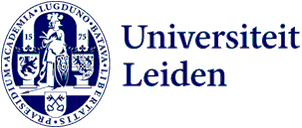FGGA 's Follow-up Strategy Plan 2026–2030: How are things going?
As you know, the faculty is working on a new follow-up strategy with six themes. Each theme now has its own writing team. Every week we speak with one of these teams about their work, and share the highlights. This weeks theme: AI led by Niels Laurens.
Disclaimer: this theme is still very much in development, so the direction outlined below may change.
Which colleagues are in your group?
We aim to speak with as many people as possible and draw on insights that are already available. This is especially important given that AI is not a strategic theme in itself, but rather supportive across all disciplines and strategic themes. So far we have spoken with Praneet Khandak, Annabel Goth, Linde Desmaele, and Damien van Puyvelde.
Can you tell us something about the theme you are working on? And how does it fit within the facultys broader strategic development?
AI is a cross cutting theme that touches education, research, valorisation, and operations. The question is: what position does FGGA want to take? Should we lead the way, and if so in which domains? Where should we remain critical, and where should we dare to step outside our comfort zone? A recurring point is that our work whether teaching, research, or support remains fundamentally human, with personal contact highly valued. For example, when considering an AI chatbot, this balance is crucial. We deploy AI where it adds value, but remain alert to the limits of technology. Students, lecturers, and researchers are at the centre, and learning, research, and facilitation take place within a community not just behind a screen. Compliance is important, but equally so is creating the right environments to experiment safely and without barriers when it comes to AI.
Do you expect major changes compared to the current situation?
In ICT developments, every day looks different from the last. Progress is not only rapid but often comes in unexpected leaps.
How do you see these changes being realised?
What matters is how we position ourselves, how we respond, and who we involve. Some people will be eager to get started, while others may be more hesitant. Bringing together and making visible who is working on what in this field is important to us. Equally, we need to look ahead in terms of AI literacy both on the preventive side for example in assessment and on the side of pushing boundaries.
Strategic Growth, led by Koen Caminada
How can colleagues get involved?
If you find this an exciting and interesting topic, get involved. Seek out colleagues who are also experimenting with AI.
Which colleagues are in your group?
Our group brings together colleagues from different parts of FGGA and reflects the intended approach of the strategic growth plans. It includes the institute boards, centre directors, and the heads of the faculty office, naturally in coordination with the Executive Board. With this proposal we are aiming for an ambitious interdisciplinary quartermaster team: academic staff, teaching colleagues, and supporting experts (from FBR O&O, FEZ, and Communications).
Can you tell us something about the theme you’re working on?
We are focusing on Strategic Growth within FGGA. The aim is to strengthen education, research, and impact, while building a clear FGGA signature that is also visible across faculties wherever it adds value.
How does your theme fit into the faculty’s broader strategic development?
This theme is at the heart of the strategic course for the coming years. FGGA wants to invest more deliberately in a limited number of strategic themes. We are creating space and time (0.5 FTE for two years) to develop strong proposals that will contribute to the faculty’s growth potential in The Hague. Think new study programmes, lifelong learning, and research initiatives that structurally strengthen both our profile and our finances. The horizon goal is 10,000 students in The Hague (currently 7,500) — achievable if we maintain the growth pace of recent years with fresh
Do you expect much will change compared to the current situation?
See it as a catalyst programme for new initiatives. It builds on what we already do well. The biggest change lies in clustering and strategically positioning initiatives that are currently fragmented. Until now, staff have had little time to properly think through and develop major initiatives. With Strategic Growth FGGA we create more coherence, focus, continuity, targeted support, and external visibility. Instead of separate projects, we build a sustainable structure with real growth potential.
How do you see these changes being realised?
We are following the quartermaster model. That means starting with a compact, flexible phase in which we sharpen priorities, free up people, build partnerships, and develop a solid plan. With support from FBR O&O, FEZ, and Communications we go through the required formats: a one-pager strategy, budget, and intended impact. Afterwards comes a decision point, where we aim to free up several colleagues within the faculty to further develop and implement the plans.
How can colleagues get involved?
Every good idea is welcome — so everyone is warmly invited. We genuinely want to be surprised. Please do share your ideas! My estimate is that our organisation can further develop around four plans in 2026 and 2027. We want to build openly, transparently, and in an inviting way.
Is there anything else you’d like to share on this topic?
This growth path is an opportunity to strengthen FGGA’s societal contribution and sharpen its profile. The Centres of Expertise are not an extra administrative layer, but a temporary phase to free up people so their talent, expertise, and initiatives can be better utilised, and then clustered to achieve impact more quickly. I see a lot of enthusiasm and invite colleagues to take part actively.
More information about the follow-up strategy can be found here.
In the coming period, interviews with all the writing teams will be added and published on this site. Each will also be briefly highlighted in the newsletter.
